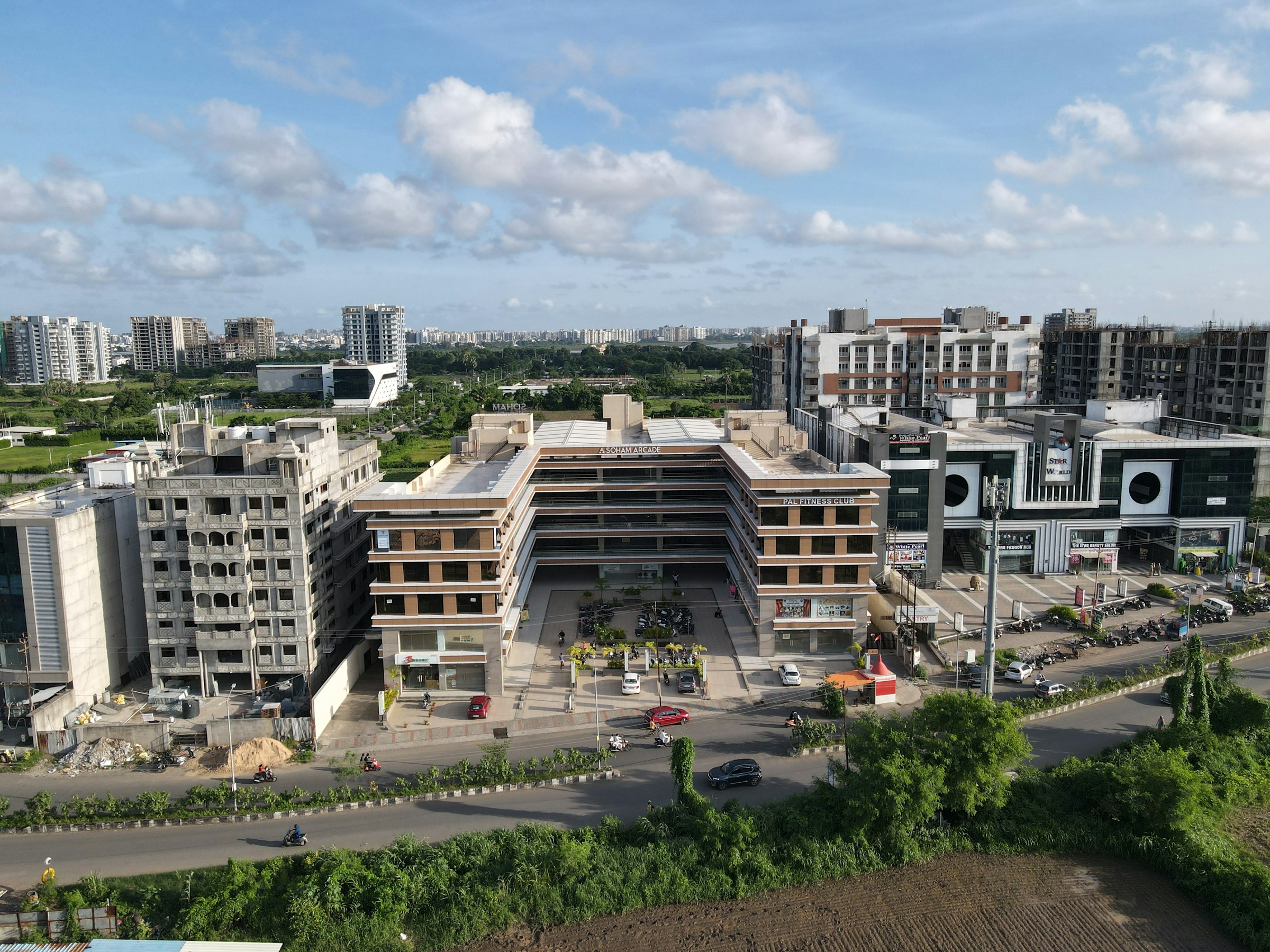Establishing a sustainable green lease is vital for commercial property owners and tenants in Birmingham aiming for environmental responsibility. This proactive approach fosters healthy relationships, promotes energy efficiency, and reduces operational costs. Understanding the essential steps to create such a lease ensures both parties benefit from a commitment to sustainable practices. Explore practical strategies to enhance your rental agreements while contributing to a greener future.
Understanding Green Leases
A Green Lease is a contractual agreement that incorporates sustainability initiatives into the leasing of commercial property. Unlike traditional leases, which typically focus solely on the financial terms of property use, green leases aim to align the interests of both landlords and tenants towards achieving environmental goals.
Avez-vous vu cela : Essential Guide to Assessing the Structural Soundness of Pre-1950 Properties in London
Definition and Importance
Green leases are essential in promoting sustainability within the commercial real estate sector. They encourage energy efficiency, waste reduction, and water conservation, ultimately leading to lower operational costs and a reduced carbon footprint. These leases often include clauses that require the use of sustainable materials, energy-efficient appliances, and environmentally friendly practices.
Sustainability in Commercial Real Estate
Sustainability in commercial real estate involves implementing practices that reduce the environmental impact of buildings. This includes using renewable energy sources, enhancing energy efficiency, and improving waste management. Green leases facilitate these practices by setting clear guidelines and responsibilities for both parties, ensuring that sustainability is a shared goal.
Lire également : Creating Robust Emergency Response Strategies for High-Rise Living: A Comprehensive Guide
Key Differences
The primary distinction between traditional and green leases lies in their approach to environmental responsibility. While traditional leases may overlook sustainability, green leases explicitly incorporate it into their terms. This proactive approach not only benefits the environment but also enhances the property's value and appeal to eco-conscious tenants.
Legal Framework for Green Leases in Birmingham
Navigating the legal requirements for green leases in Birmingham involves understanding the local regulations that shape sustainable leasing practices. The city's commitment to sustainability is reflected in its stringent guidelines, which landlords and tenants must adhere to.
Relevant Local Laws and Regulations
Birmingham has implemented specific regulations to ensure that commercial properties meet environmental standards. These include mandates for energy-efficient building designs and the use of renewable energy sources. Such regulations are crucial for compliance and play a significant role in shaping the structure of green leases.
Key Legal Considerations
Landlords and tenants must consider several legal aspects when drafting a green lease. These include agreeing on shared responsibilities for maintaining energy efficiency and waste management. It's essential to clearly outline these responsibilities to avoid disputes and ensure both parties contribute to sustainability goals.
Compliance and Certification Programs
Birmingham offers various sustainability certification programs that encourage compliance with green lease standards. Certifications, such as BREEAM, provide a framework for assessing the environmental performance of buildings. Achieving these certifications can enhance a property's marketability and demonstrate a commitment to sustainability. Understanding these programs can help landlords and tenants align their leasing agreements with broader environmental objectives.
Essential Components of a Sustainable Green Lease
A sustainable green lease is structured to promote environmental responsibility and includes specific elements that encourage sustainability.
Energy Efficiency Provisions
Energy efficiency is a cornerstone of green leases. Provisions often require the use of energy-efficient appliances and systems. These clauses might also set targets for reducing energy consumption. Financial incentives can be structured to motivate tenants to adopt energy-saving practices. For example, landlords might offer reduced rent or rebates for meeting energy benchmarks. This not only lowers operational costs but also aligns with broader sustainability goals.
Waste Management and Recycling Initiatives
Effective waste management is crucial for sustainability. Green leases typically include clauses that mandate recycling and waste reduction practices. Tenants and landlords share responsibility for implementing these initiatives. Clear guidelines ensure both parties contribute to maintaining a sustainable environment. This could involve setting up recycling stations or using composting systems.
Maintenance and Repair Responsibilities
Maintenance clauses in green leases are designed to uphold sustainability standards. They specify responsibilities for repairing and maintaining energy-efficient installations. Both landlords and tenants must ensure that sustainable practices are consistently applied. This might include regular inspections and the use of sustainable materials for repairs. Such measures ensure the property remains environmentally friendly throughout its lifecycle.
Negotiating a Green Lease
Navigating the negotiation of a green lease requires a strategic approach to ensure sustainability goals align with both tenant and landlord interests. Effective negotiation tips can be essential in achieving a lease agreement that promotes environmental responsibility.
Strategies for Negotiating Sustainability Terms
When negotiating sustainability terms, it's crucial to focus on clear and achievable lease terms. Begin by identifying mutual sustainability goals and establish measurable targets, such as energy consumption reductions or waste management improvements. Consider incorporating incentives for meeting these targets, which can motivate both parties to commit to sustainable practices.
Engaging Stakeholders in the Negotiation Process
Stakeholder engagement is vital in the green lease negotiation process. Involve all relevant parties, including property managers and sustainability consultants, to ensure diverse perspectives are considered. This collaborative approach can lead to more comprehensive and effective sustainability strategies. Regular communication and transparent discussions help build trust and facilitate smoother negotiations.
Balancing Tenant Needs with Landlord Objectives
Balancing tenant needs with landlord objectives is essential for a successful green lease. Tenants may prioritise cost savings, while landlords might focus on enhancing property value. By aligning these interests, such as through shared savings on energy costs, both parties can benefit from the lease agreement. A well-negotiated green lease can ultimately foster a productive and sustainable partnership.
Benefits of Green Leases
Green leases offer numerous advantages that extend beyond environmental considerations, providing significant cost savings and enhancing tenant satisfaction.
Economic Benefits
For both landlords and tenants, green leases can lead to substantial economic benefits. By incorporating energy-efficient systems and sustainable practices, operational costs are reduced. These savings can be shared, creating a win-win situation. Landlords may see increased property values and reduced vacancy rates, while tenants enjoy lower utility bills.
Environmental Impact and Corporate Responsibility
Green leases reinforce a company's commitment to corporate responsibility by directly addressing environmental impact. Implementing sustainable practices contributes to a reduced carbon footprint, which not only benefits the environment but also improves a company's public image. This proactive approach can attract eco-conscious clients and partners, enhancing overall business reputation.
Enhancing Tenant Satisfaction
Sustainability initiatives within green leases significantly boost tenant satisfaction and retention. Tenants value the opportunity to contribute to environmental goals, aligning with their personal or corporate values. Moreover, sustainable buildings often provide a healthier and more pleasant working environment, which can improve employee well-being and productivity. By fostering a sense of shared responsibility, green leases cultivate long-term, mutually beneficial relationships between landlords and tenants.
Case Studies and Real-World Examples
Exploring case studies of green leases in Birmingham provides valuable insights into their practical applications and outcomes. These success stories highlight how sustainability goals can be effectively integrated into commercial property agreements.
Successful Implementations of Green Leases in Birmingham
Several properties in Birmingham have adopted green leases with remarkable success. One notable example is the Colmore Building, where stakeholders implemented energy-efficient lighting and HVAC systems. This resulted in a significant reduction in energy consumption and operational costs. Such initiatives not only enhanced the building's environmental performance but also increased its market appeal.
Analysis of Outcomes from Specific Case Studies
Analysing outcomes from these case studies reveals key best practices. Successful green leases often involve clear communication between landlords and tenants, ensuring alignment of sustainability objectives. Additionally, incorporating incentives for achieving energy efficiency targets has proven effective in motivating all parties to actively participate in sustainability efforts.
Lessons Learned and Best Practices for Future Leases
Lessons learned from these cases emphasise the importance of setting measurable sustainability goals and regularly reviewing progress. Future leases can benefit from adopting a flexible approach, allowing adjustments to sustainability strategies as technologies and regulations evolve. By applying these insights, stakeholders can foster a collaborative environment that supports long-term environmental responsibility.
Resources for Further Assistance
Navigating the complexities of green leases can be challenging, but numerous support resources are available to provide guidance. Local organizations and agencies play a crucial role in assisting both landlords and tenants. These entities often offer workshops and seminars on sustainable leasing practices, helping stakeholders understand the intricacies involved.
In addition to local support, a wealth of online resources and toolkits are accessible for those seeking to create effective green leases. Websites dedicated to sustainability in real estate provide templates and best practices, making it easier to incorporate environmental goals into leasing agreements. These resources are invaluable for those new to the concept of green leases.
For more specialized needs, professional help is available. Experts in lease negotiation and compliance can offer tailored advice, ensuring that all legal and environmental requirements are met. Engaging with professionals can streamline the process, making it more efficient and less daunting. They can also assist in aligning lease terms with broader sustainability objectives, ensuring a successful outcome for all parties involved.






